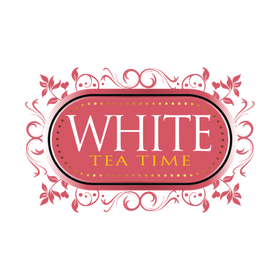WHAT IS WHITE TEA?

Most people are familiar with green tea or black tea. However, when it comes to white tea (Thé Blanc, 백차), people still wonder: “White tea? Is it white in colour?”
No, white tea is not white in colour. In fact, it comes from the same tea plant as all other types of tea, the Camellia Sinensis. Different processing methods in turn lead to 6 different types of tea - white tea, yellow tea, green tea, oolong tea, black tea and pu-er tea.
White tea is the least processed and the most natural tea among the different types of tea, with only 2 simple steps – withering and drying. As a result, silvery white downy hairs/trichomes remain visibly present on the leaf buds, which gives white tea its name.
Being minimally processed, white tea retains to the greatest extent the beneficial compounds originally present in fresh tea leaves. Most notably, white tea contains a high concentration of polyphenols, a powerful anti-oxidant that promotes health, prevents diseases and strengthens the body’s immune system. White tea extract is also being widely used as an active ingredient in beauty and skin care products. Furthermore, aged white tea is highly valued for its medicinal properties. As the old Chinese saying goes, white tea is deemed a tea after 1 year, a medicine after 3 years, and a treasure after 7 years.
WHY ARE THERE DIFFERENT TYPES OF WHITE TEA?
At White Tea Time, you will find various white teas presented in their original natural form, that is tea leaf only. There is no added artificial flavors, colours, additives nor preservatives. You might ask - why are there various forms of white tea, and what makes them different? There are many factors, such as the country of origin, the region where the tea is grown, the cultivar of the tea, the terroir, the cultivated tea plant or wild growth tea trees, the elevation of the tea plantation, the season in which the tea is harvested, the extent of natural fermentation of the tea leaves, as well as the parts of the tea plant used. These are factors that affect the growth & nutrients of the tea, thereby producing different tasting notes of white tea.
WHAT DOES WHITE TEA TASTE LIKE?
White tea tastes lighter and more refreshing than other types of tea, and is amazingly devoid of the bitterness that tends to surface after prolonged steeping time. For this reason, white tea is very easy to brew, both hot and cold, and very pleasant on the palate. White tea can be drank all day long, in the morning as your breakfast tea too. Have your choice of silver tip, moonlight, aged white tea brewed in your cup and simply enjoy!
DOES WHITE TEA CONTAIN CAFFEINE?
Contrary to popular claims that white tea contains the lowest caffeine among all teas, this issue is still highly controversial and we prefer to hold a more balanced view. Leaf buds contain a higher concentration of caffeine, this acts as the nature's natural "insecticide" that protects the tender leaf buds against pests. Furthermore, the caffeine content of white tea is subject to many variables, such as the tea's cultivar, grade, brewing time and temperature. While caffeine sensitivity varies greatly among individuals, one can reduce caffeine intake with a lighter brew by using a lesser amount of tea leaves and infusing with cooler water for a shorter time.
